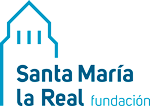“In the heart of the Middle Ages, around the year 1000, Romanesque art and aesthetics enjoyed its moment of maximum splendour.” – SpainIsCulture.com
The Middle Ages took place from the fall of Rome, in 476, to the beginning of the Renaissance, in the 14th century.
By the 9th century’s end, the reign of Medieval Emperor Charlemagne and the ensuing Carolingian renaissance were drivers for cultural flourishing and dissemination. The former Western Empire had gradually Christianized, monasticism was widely embraced, and the religious orders became a key vector for culture, organization and influence across Europe. During the centuries to follow, France’s influence was to be prominently felt in Iberia.
Agricultural productivity in Europe in the 11th century was greatly enhanced by technological advances (such as the invention of the heavy plow) and innovative new farming practices (such as crop rotation). As a result of this, the population grew, and trade and prosperity amplified across the continent. This economic and demographic boom fostered pilgrimages and trade, new construction and the development of arts.
Within this context, the Romanesque style – characterized by rounded arches and barrel vaults in architecture and simplified, hieratic poses in figurative art – was dominant in a huge surge of construction (mainly religious) from the first half of the 11th century and throughout the 12th century, until it started to transition to the Gothic style.
With the new churches came beautiful figurative art, painting and sculpture to match, and so Romanesque Art, developed in the Hispanic-Christian kingdoms of the Iberian Peninsula in the 11th – 13th centuries, assumed particular relevance in Spain.
As styles gradually spread across East to West Europe, they developed their own particular characteristics and distinctive personalities in the different regions of the Peninsula. The new techniques in architecture, sculpture and painting permeated the Christian Kingdoms of Iberia, essentially along the Way of Saint James. They were greatly enriched by the existing tradition, and particularly by the frequent presence of the finest Arab art from the territories of al-Andalus.
Hence scholars define regional characteristics for the Iberian Romanesque accordingly:
- The Eastern Kingdoms: Pyrenean, Catalan, Aragonese, and Navarrese variants.
- The Western Kingdoms: Castilian-Leonese, Asturian, Galician, and Portuguese variants.
- The Southern half of the Iberian Peninsula: There is a scarcity of Romanesque Art in this region because it remained under Muslim rule.
The earliest works of Romanesque sculpture in the Hispanic-Christian kingdoms are two lintels of the Roussillon area which share similar iconography. One can be found in the Saint-Génis-des-Fontaines Abbey (dated in 1020) and the other in the monastery of Sant Andreu de Sureda. The most outstanding examples from the 12th century, however, are the façades of Santa Maria de Ripoll, of the Church of Santa María la Real (Sangüesa), of the monastery of San Pedro el Viejo (Huesca) and the cloister of the monastery of San Juan de la Peña.
Spanish Romanesque painting boasts some outstanding frescoes such as the Pantheon of the Kings of Saint Isidore (León), retained ‘in situ’. There are also those removed from their original locations such as the church of San Baudelio de Berlanga and the hermitage of la Vera Cruz (Maderuelo), both in the Prado Museum (in Madrid), and the collection assembled in the National Art Museum of Catalonia.
Panel painting produced antependiums (or altar frontals) that, especially in Catalonia, absorbed the Italian-Byzantine influence from the 12th century. In the later period, one can see the painting evolving into the Gothic style, showcasing a higher narrative capacity and less stiffness.
The Collegiate Church of Saint Isidoro is one of the most important Romanesque buildings in Spain, with its Royal Panteon affectionately referred to as the “Sistine Chapel of Romanesque Art”, boasting frescoes on stuccowork over a thousand years old.
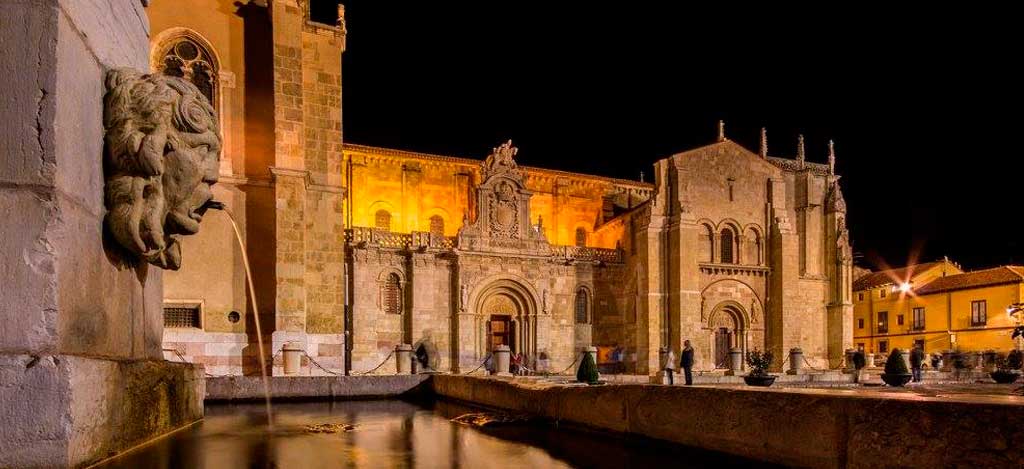
It was built on the foundations of an earlier church dedicated to Saint John the Baptist, which was razed to the ground in 988 by Al-Mansur. The building was later restored by Alfonso V and a new church was subsequently built by Ferdinand I. The relics of Saint Isidore and Saint Vincent were transferred there, making it a particularly significant site.
The church was originally built in the Asturian pre-Romanesque style and was later rebuilt in the full Romanesque style, boasting three naves and a sanctuary with three apses. One of these apses was removed when it was converted to the Gothic style.
Today you can visit the site and wander around the museum, browse the shelves of the Renaissance library, and admire the magnificent architecture of the cloister and the Royal Panteon, boasting two beautifully preserved and important fresco scenes, namely The Announcement of the Angel to the Shepherds and The Last Supper.
Sources:
http://www.spainisculture.com/en/monumentos/leon/colegiata_real_de_san_isidoro_de_leon.html
https://www.museosanisidorodeleon.com/en/
https://www.museosanisidorodeleon.com/en/history-and-arquitecture/
Villalcázar de Sirga (Church of Santa María la Blanca) is situated on the Pilgrim’s Road to Santiago de Compostela as it passes through the territory of Palencia.
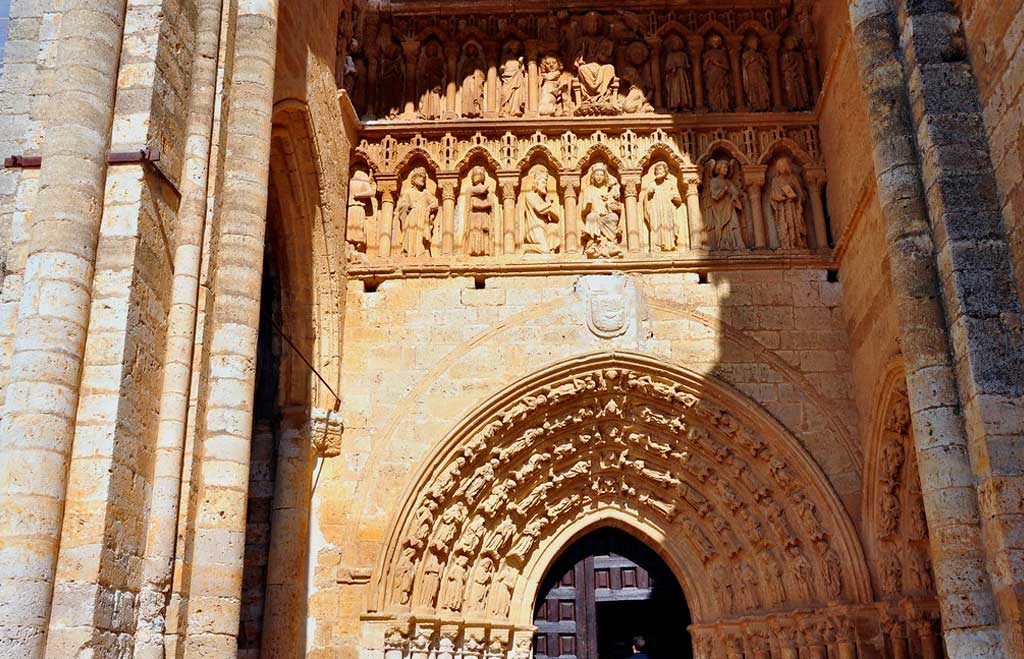
It is home to a monumental 13th century church named after Santa María la Blanca. The church, described as the “Sistine Chapel of the ogival Romanesque style”, is celebrated for the remarkable double frieze on its main front façade.
Two pointed archivolt doors, decorated with figures from the Old and New Testaments, crown the façade and are accompanied by two overlapping friezes. The lower frieze shows the images of the Virgin with the Child, the adoration of the Magi, the Annunciation and Saint Michael spearing the devil, while the upper frieze boasts a scene quite typical of the old Romanesque friezes, namely the Pantocrator in the center, surrounded by the symbols of the evangelists and flanked by an incomplete apostolate.
The style of these friezes is an important link with the workshops that worked in the cathedrals of Burgos and León, with numerous stylistic connections being easily detectable.
Besides the friezes, there are other wonders inside the Santa María la Blanca Church for travelers to see, such as the 13th century image of the Virgen de las Cántigas, the polychrome stone tombs of the infante Don Felipe and his wife, and the magnificent Spanish-Flemish reredos dating from around 1500.
Source:
http://185.79.129.24/en_US/que-quieres/ciudades-pueblos/otros-destinos/villalcazar_de_sirga.html
The Guggenheim Museum in Bilbao, opened in 1997, completely transformed Bilbao’s image and put the city on the world map.
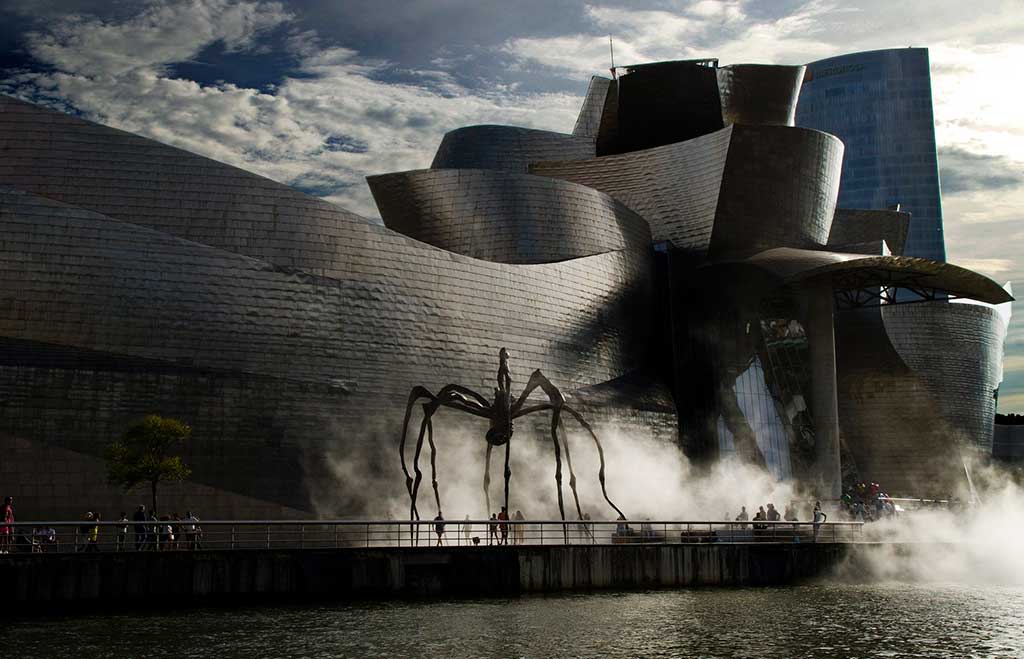
Undoubtedly one of the most remarkable buildings of the second half of the 20th century, it was designed by American architect Frank Gehry. As the architect himself explained, the design is based “on the port where it was built and the city it is”, symbolizing a ship anchored on the banks of the Nervión estuary.
The 33 000 titanium sheets that clad the museum exterior charmingly reflect the color and movement of its immediate environment. And boy is that environment something to reflect on – beautiful promenades, parks and squares, filled with the work of artists such as Louise Bourgeois, Eduardo Chillida, Yves Klein, Jeff Koons and Fujiko Nakaya, surround the Guggenheim and pay tribute to its glorious stature.
The Guggenheim Bilbao’s permanent collection includes artworks by the most prominent artists of the second half of the 20th century, including a beautiful selection of contemporary Basque and Spanish art. The permanent collection is supplemented by exhibits lent by the Solomon R. Guggenheim Foundation, as well as other special programs sponsored by the Foundation.
Sources:
https://www.bilbaoturismo.net/BilbaoTurismo/en/guggenheim-museum-bilbao_2
https://tourism.euskadi.eus/en/museums/guggenheim-museum-bilbao/aa30-12375/en/
The Bilbao Fine Arts Museum’s collection boasts more than six thousand artworks, with a special interest in Spanish and Basque art.
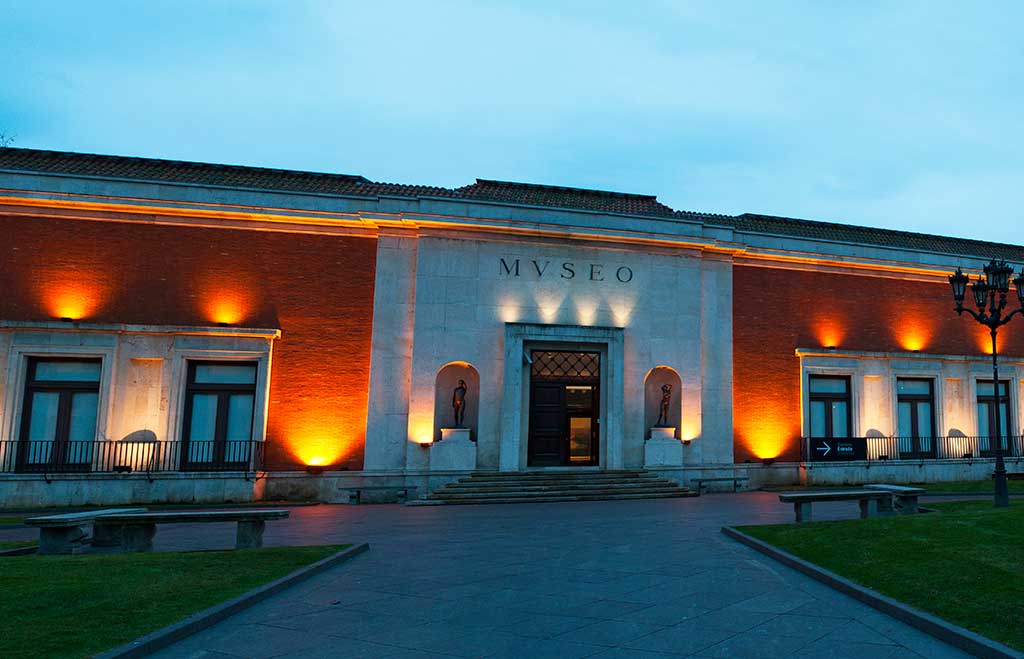
The collection owes its impressive stature to its merger with both the old Museo de Bellas Artes (Fine Arts Museum), inaugurated in 1914, and the Museo de Arte Moderno (Museum of Modern Art), opened in 1924. Not surprisingly, the multitude of paintings, sculptures, drawings, engravings and decorative objects on display are remarkable for their ample chronological coverage (from the 12th century to the present day) and their extraordinary variety.
Of particular prominence are works by Adolfo Guiard, Ambrosius Benson, Anthony Van Dyck, Antoni Tàpies, Antonio Moro, Aurelio Arteta, Bartolomé Bermejo, Oteiza, El Greco, Zuloaga, Sorolla, Goya, Francis Bacon and Bartolomé Esteban Murillo, among many others.
Sources:
http://www.bilbao.eus/cs/Satellite?c=BIO_Equipamiento_FA&cid=3000453145&language=en&pageid=3000026479&pagename=Bilbaonet%2FBIO_Equipamiento_FA%2FBIO_Equipamiento
https://tourism.euskadi.eus/en/museums/bilbao-fine-arts-museum/aa30-12375/en/
The National Sculpture Museum is a museum in Valladolid, Spain, belonging to the Spanish Ministry of Culture.
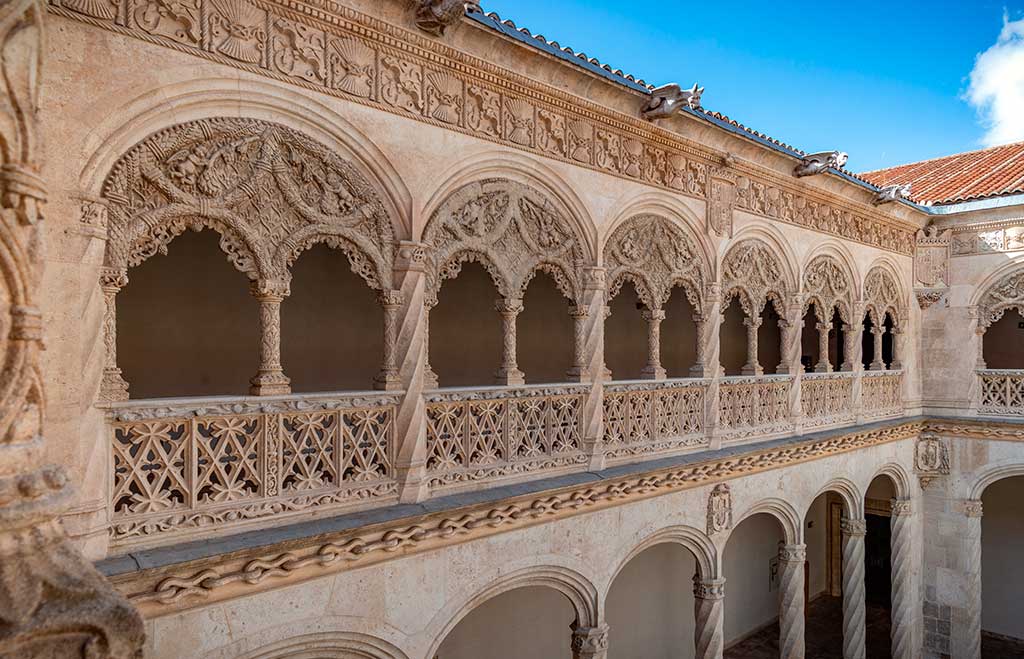
The castle’s current appearance is the result of a combination of several structures, the first from around the 9th century, and the last from the mid-15th century. It is a very well-preserved fortress, built in the shape of ship. The keep, more than 30 meters high, is flanked by two courtyards: one to the north, which contains the underground reservoirs and the store rooms, and one to the south, which was originally the site of the stables and guards’ quarters but today houses the Provincial Wine Museum.
The Provincial Wine Museum is one of the most visited museums in Castilla and León (averaging 100 000 visitors a year) and its success is divided between its beauty and the cultural value of both the content and the building itself. It has been, deservedly, called a ‘place of pilgrimage’ for lovers of cultural and wine tourism and is not to be missed.
Other than the castle, the most important building to visit in Peñafiel is the church of San Pablo. It was founded in 1324 and is one of the finest examples of the Valladolid region’s Gothic-Mudejar architecture, visible in the outside treatment of the brick chevet, buttressed by two protruding towers above horseshoe arches.
Sources:
http://www.spainisculture.com/en/destinos/penafiel.html
http://www.turismopenafiel.com/recurso.php?m=3&nv=0&id=208&lang=en
https://www.rutadelvinoriberadelduero.es/en/accessible-cultural-resource-monument-castle-museums-and-interpretation-centres/museo-provincial-del
https://travelguide.michelin.com/europe/spain/castile-and-leon/valladolid/penafiel/church-san-pablo
The Casa Lis Art Nouveau and Art Déco Museum in Salamanca is a museum of decorative arts that takes visitors on a visual journey from the last decades of the 19th century straight through to World War II.
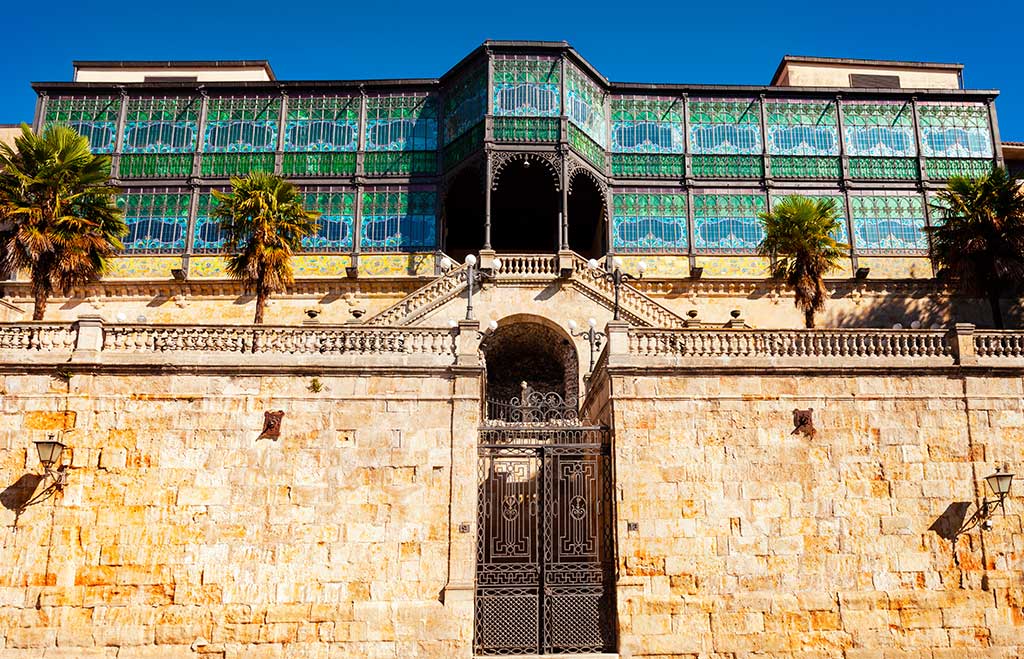
This period of little more than sixty years is undoubtedly one of the most prolific periods of the applied arts. The bulk of the works that can be seen in the museum are utilitarian objects which respond to specific aesthetic criteria, such as the quality, detail and the exquisite finishes that the Art Nouveau style celebrated.
There are nineteen impressive collections in the museum for visitors to explore, including:
- Jewels from Masriera and Faberge
- Iridescent glasses from the Loetz, Kralik, Pallme König and l’École de Nancy, including pieces by Émile Gallé, the Daum Brothers and Paul Nicolas
- Furniture from Homar, Majorelle and Busquets
- Porcelain pieces by Rosenthal, Royal Copenhagen, Mariano Benlliure, Gustave Guetant and Zuloaga
- An outstanding French porcelain doll collection from the 19th century, defined by experts as the best collection ever exhibited worldwide
- The Chryselephantine collection by Demetre Chiparus and Ferdinand Preiss. These are small sculptures that combine metal for clothes and ivory for the nude parts of the body (such as the hands and face) that have become emblematic of Art Déco
If visiting all nineteen collections leaves you feeling parched, be sure to end your tour at the Café de Lis for an aperitif. You might also want to stop past La Tienda de Lis to purchase a souvenir or gift.
Sources:
http://www.museocasalis.org/nuevaweb/lang/en/museo/museo-artes-decorativas
https://www.salamanca.es/en/casa-lis-art-nouveau-art-deco-museum


